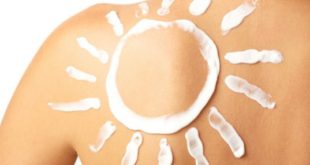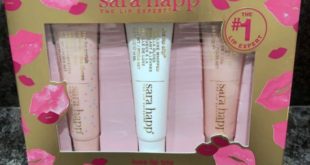
Antiperspirants are pretty crazy, if you think about it. One little ingredient makes them all possible: aluminum salts, which cozy on up to your sweat glands and plug them closed. They tend to be more effective than plain ol’ deodorants because they can nip the issue (odor) in the bud by cutting off its roots (sweat). While risk factors associated with aluminum antiperspirants have largely been debunked, some people choose to forgo them anyway. Let’s say that person is you. Hello there! Controlling pit stink just got a lot more complicated—I know from experience.
The thing is, as with all greenwashed beauty trends, the term “natural deodorant” doesn’t tell you much about what you’re actually using. While it’s true that all antiperspirants include aluminum, there isn’t one ingredient that all deodorants rely on to minimize BO. So before you give up on aluminum-free deodorant after your first bad experience, listen up! There might be a different deodorizing ingredient out there that’s your body’s perfect match. This glossary of the eight most common makes it easier, but to tell you the truth, “easy” is an antiperspirant’s game. The process can be tedious: if something doesn’t work for you, just move on to the next category until you find one that does. (Eventually, you will.)
The Strategy:
Baking Soda
The Good:
Baking soda deodorants are popular, so you’ve got a lot of options for scent, format, and price. These deodorants work because baking soda is antibacterial. It’s also alkaline, which may help stop smelliness throughout the day by creating a pH environment that’s too high for odor-causing bacteria.
The Bad:
Because the pH of baking soda is significantly higher than that of your skin, you might experience irritation and redness. This is much more common with homemade baking soda deodorants, which tend to call for a much higher concentration of the stuff than you’d find in store-bought ones. There’s also some evidence that a high pH might actually help certain odor-causing bacterias to get busy. And finally, baking soda deodorant can leave underarm stains on your clothes—to prevent this, apply sparingly.
The Strategy:
Magnesium Hydroxide
The Good:
Like baking soda, magnesium hydroxide has antibacterial qualities and a higher-than-skin pH (it’s even more alkaline than baking soda). But where the two differ is how they interact with water—magnesium hydroxide is less soluble, so it takes longer to fully dissolve in sweat. Instead of plunging right into a new pH, this means your skin can adjust over time, which not only means less irritation but also potentially better staying power. There are lots of options for magnesium hydroxide deodorants.
The Bad:
All the ones you know already come with a high pH. Some people DIY magnesium hydroxide deodorants by using straight up milk of magnesia on their armpits, but you’d be missing out on the wetness-control powders, odor-masking scents, and soothing moisturizers in a real deodorant.
The Strategy:
Exfoliating Acids
The Good:
Instead of making your armpits too alkaline for bacteria to thrive, acids make them too acidic. Your skin has an acidic pH anyway, and because sweat is slightly basic, applying acid gets your pits out of that neutral sweet spot bacteria love. It’s a more skin-friendly option with less irritation and better smell-busting power. Plus, repurposing an acid toner that your face didn’t love on your underarms is a sustainable, budget-friendly way to test the theory before you buy another deodorant.
The Bad:
There aren’t too many brands that have utilized acids in their deodorants yet! So, unless you go the toner route, your options are relatively limited (and comparatively expensive).
The Strategy:
Fermented Elements
The Good:
Unlike other deodorants that work by killing or minimizing bacteria, these microbiome-feeders contain live enzymes that break down odor-causing compounds into amino acids, the building blocks of microbial life. In an interesting study, scientists found that by transplanting diverse bacteria strains onto a smelly person, they became less smelly. So by making sure you have a healthy microbiome, you essentially fight BO without actually fighting it.
The Bad:
As with the kind you ingest, probiotics are a difficult thing to measure—look for specific ingredients proven to be beneficial for skin’s microbiome. You might see any of the following on a label: saccharomyces ferment filtrate, lactobacillus ferment, fructose, inulin, and alpha-glucan oligosaccharide,
The Strategy:
Witch Hazel
The Good:
OK, sure, witch hazel has been shown to have somewhat antibacterial properties. And it is an astringent, though that doesn’t mean it shrinks pores to let less sweat out like some brands would have you believe.
The Bad:
Look guys. Thayers, iconic red-capped witch hazel purveyor, makes a deodorant—and it doesn’t even rely on witch hazel alone! The thing has prebiotics and baking soda! If they don’t trust their own product to get the job done on its own, you probably shouldn’t either. Approach deodorants that use witch hazel as their main event with a grain of salt… and maybe something else for backup. It’s likely that your favorite witch hazel deodorant actually has something else going on.
The Strategy:
Zinc Ricinoleate
The Good:
Instead of killing bacteria, zinc ricinoleate seems to… absorb odors. It’s a complicated molecular process that scientists are just beginning to understand, and while some people find it effective, it’s probably not the strongest option on this list.
The Bad:
There aren’t many deodorants on the market that primarily utilize zinc ricinoleate for odor control purposes. Beware of deodorants that tout zinc oxide instead, which will help prevent sunburn but not smell.
The Strategy:
Just Lots Of Fragrance
The Good:
If you’d ask these deodorants, the best defense is a strong offense. They don’t bother with odor-neutralizing or bacteria-killing ingredients—instead, they pair a gentle base with so much scent that you couldn’t possibly smell your BO over it. At least, that’s the idea. They’re best for people who don’t sweat or stink too much.
The Bad:
If you’re looking for something to truly stop body odors, not just mask them, these deodorants won’t work the way you want ‘em to. Plus, there are drawbacks to high levels of fragrance. The synthetic ones often contain potentially harmful ingredients, and high levels of essential oils (which are natural!) can be even more irritating than baking soda. If you get rashes or breakouts from fragrance in skincare, you’re likely to get a similar reaction in your pits.
The Strategy:
Silver
The Good:
The antibacterial effect of silver has been known for a long time, and it’s often used in medical dressings and dental fillings for this reason. On your pits, an application of silver before you start to sweat may prevent bacteria from growing and stinking you up.
The Bad:
There aren’t really studies to back this up. Some people say it works? But silver may not be a strong enough antibacterial to keep you fresh throughout the day. Plus, it doesn’t work on all strains of bacteria. And it isn’t used in many natural deodorants on the market right now.
—Ali Oshinsky
Photo via ITG



